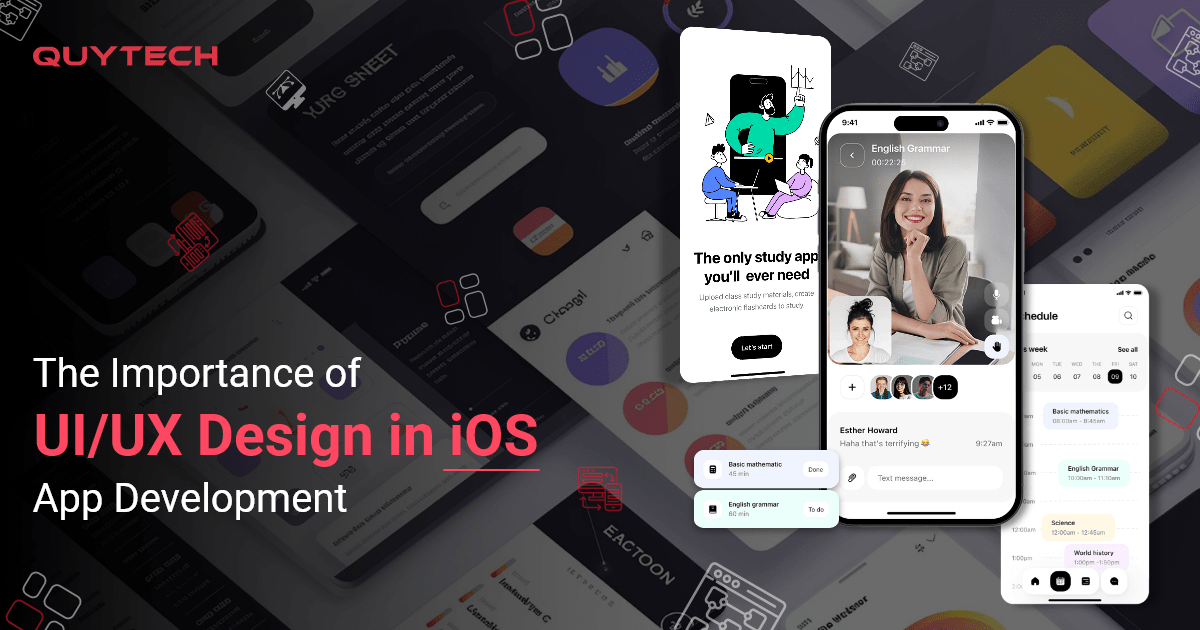Rafalin, the CEO, Chairman, and Co-Founder at vFunction, discusses the data results from the new vFunction survey that analyzed why app modernization projects fail from developers’ and architects’ points of view. Rafalin also goes over the major trends that you should prioritize when modernizing an application, the key elements of successful modernization app projects, how to garner executive buy-in, the challenges with maintaining monoliths, and tons more.
ADM: What are the major trends that are driving companies to prioritize modernizing their applications?
Rafalin: There are two major trends today that are driving companies to prioritize application modernization: a spike in technical debt that is dragging down IT innovation and a lack of application scalability that is hindering business agility. At first, technical debt has hit a tipping point for many organizations, which directly affect their ability to innovate and invest in new initiatives as they emerge, with the response to the COVID-19 pandemic a perfect example. With the pandemic, companies that were drowning in a sea of technical debt were unable to innovate to adapt to a rapidly changing environment. Secondly, monolithic applications lack the elasticity and scalability to deliver the business agility that comes from using the cloud-native infrastructure.
As competitive pressures increase, companies are thus driven to embark on modernization projects. Digital natives with software built for the cloud, originating with modern architectures (cloud native) and stacks, are able to rapidly respond to changing market conditions with innovative features and functionality. Whereas traditional companies with a backlog of monolithic applications are fighting with scalability and reliability issues, which brings heavy competitive pressure in a fight for customer loyalty.
ADM: What are the key elements to successful app modernization projects and what causes app modernization projects to fail?
Rafalin: In a recently completed study by Wakefield Research of both executives and architects who have begun modernization projects and have seen progress, be it moderate or significant, the respondents cited having the “proper resources and tools” as critical components to success. This includes “the right organizational structure to support the target modernized architecture” as a key element to successful modernization projects. The 2nd most cited reason for successful outcomes lends to project management skills, as well as setting realistic expectations: “We had a sufficiently built schedule or timeline to execute.” The next reasons cited are “deploying the proper resources and/or skilled employees” and “sufficient budget.” Securing the resources and the budget is commonly one of the top challenges with app modernization projects today. If companies can fund the projects, align with proper stakeholders, and have well-defined goals, successful modernization projects are well within reach.
ADM: If the C-suite isn’t making app modernization a priority, as a developer or architect, what are some ways you can garner executive buy-in?
Rafalin: The C-Suite understanding of how investing in modernization projects benefits a company’s present and future is a critical element to a successful app modernization project. As developers and architects build a business case for app modernization, there are critical elements to garner executive buy-in.
Our survey found that developer and architect respondents know that app modernization projects can boost sales and customer loyalty, deliver a seamless customer experience, and establish a competitive advantage against competitors. When creating a business case for modernization, the app modernization roadmap must follow a data-driven approach that accurately measures the technical debt, complexity, and risk associated with these monolithic apps and the resulting positive ROI impact on innovation if they address this debt. To secure C-suite prioritization for these modernization projects, developers and architects must be able to deliver a plan of action outlining which applications are to be modernized and why the specific ROI delivered by the project, the modernization approach appropriate for each application (e.g., refactor vs. retire vs rewrite, etc.), and a timeline for completion.
ADM: The survey indicates internal organizational struggles and misalignment between business and tech teams. Can you expand on the ways they’re misaligned?
Rafalin: Architects and executives most often speak to two sides of the same coin: business outcomes vs. technical execution of projects in order to achieve the same business outcomes. Our survey found that architects and executives often agree, but not on overall goals, challenges, and reasons for failure.
For example, executives express the need to speed innovation and respond to business requirements and cite “expectations” as a top reason for failure. Architects, on the other hand, want to improve engineering velocity, find and train developers, and cite a “lack of intelligent tools” as a top reason for failure. These differences highlight the critical need for architects and executives to align on the purpose of modernization projects as well as specific strategies to accomplish goals. As architects must focus on the details in executing plans, executives need to align on the needs and elements required for the same common goal and desired business outcome.

ADM: What are the biggest challenges with maintaining monoliths?
Rafalin: The survey found near universal agreement as 99% of respondents cited that they experience hard challenges in maintaining monolithic apps.
Executives ranked their top challenges from a more strategic business perspective, as “keeping up with business requirements.” This insight demonstrates the challenge of monoliths to simply maintain the code to allow the business to run as usual. Not only are CIOs tasked with maintaining business as usual, but they are also tasked with building the functionality to give the company a competitive advantage.
Meanwhile, architects speak to “finding developers who can maintain it and ramping them up” as a top challenge. This is a very real problem, as companies today face a number of hiring and retaining challenges. The Great Resignation trend in the market has companies struggling to keep their talent, and when it comes to hiring, new candidates often command exorbitant salaries. Combine those two challenges with the trend that more and more developers are pursuing the skills needed to build cloud-native technologies instead of the ones needed to maintain monoliths.
ADM: What are the biggest challenges with the refactoring process?
Rafalin: Refactoring, while the most common definition of app modernization, faces constant challenges when it comes to time and tools. Executives worry it takes too long, and architects worry it is too difficult. Both have been true; refactoring has been laden with manual burden, and the analysis alone of millions of lines of code and thousands of classes used to take months without newer tools using AI and automation. Without the proper tools, architects can be stuck untangling thousands of dependencies and searching for the worst written classes contributing most of their technical debt. Architects who are struggling again point to a lack of tools, a consistent theme found in the latest research.

ADM: From a business perspective, what are the biggest benefits of modernizing your infrastructure?
Rafalin: One of the biggest benefits of modernizing your legacy infrastructure is to ensure that your business remains competitive. Enterprises must have the agility to rapidly adapt and upgrade internal and customer-facing processes to meet quickly changing marketplace requirements.
Though legacy infrastructures are stable, modernizing legacy systems enables organizations to take full advantage of the new technologies, security, languages, tools, and infrastructure that are at the core of today’s IT infrastructure evolution. And that, in turn, can yield major improvements in availability, performance, scalability, security, compliance, and user experience for customers.
ADM: What are the goals architects are looking to achieve when it comes to app modernization? How does that differ from executives?
Rafalin: Each IT stakeholder feels different pressures when it comes to application modernization. While executives rank investing in application innovation as a top priority, app architects list improving engineering velocity as the main priority – these different goals reflect the unique pressure these IT stakeholders feel.
For architects, the top goal for application modernization is to ensure that engineering velocity is increased, while focusing on improving innovation, increasing application scalability, and reducing the ramp time for new developers.
Executives, on the other hand, are pressured to become more innovative, secure a larger market share, fend off competitors, and provide a better customer experience. Executives are also looking to improve engineering velocity, lower their technical debt, and increase their application scalability.
Even with the same overall organizational goal, the differentiation is that innovation is the main necessity for business objectives but architects are focused on the “people side” by prioritizing the training and talent when it comes to managing these monolithic apps. The ramp-up time is the biggest threat to architects, whereas technical debt is the antithesis of engineering velocity. The elements and challenges are equally crucial to achieving innovation conducive to application modernization goals.
Moti Rafalin, CEO, Chairman, and Co-Founder at vFunction
Moti Rafalin co-founded vFunction and serves as its CEO. He brings over 20 years of experience in the enterprise software market to his role, with a focus on infrastructure, applications, and security. Prior to co-founding vFunction, Moti co-founded and led WatchDox from inception until its acquisition by BlackBerry, growing the company over 20 consecutive quarters and establishing it as a leader in the secure enterprise mobility and collaboration space. Subsequently, he served as Senior Vice President at BlackBerry LTD.
Prior to co-founding WatchDox, he served as the General Manager of the Application Management Business at EMC. Moti served in the Israel Air Force where he led teams of engineers, technicians, and operational officers through cutting-edge technological projects. He is a graduate of the Technion, Israel Institute of Technology, and holds an MBA from the Harvard Business School.

Become a subscriber of App Developer Magazine for just $5.99 a month and take advantage of all these perks.





















Discussion about this post